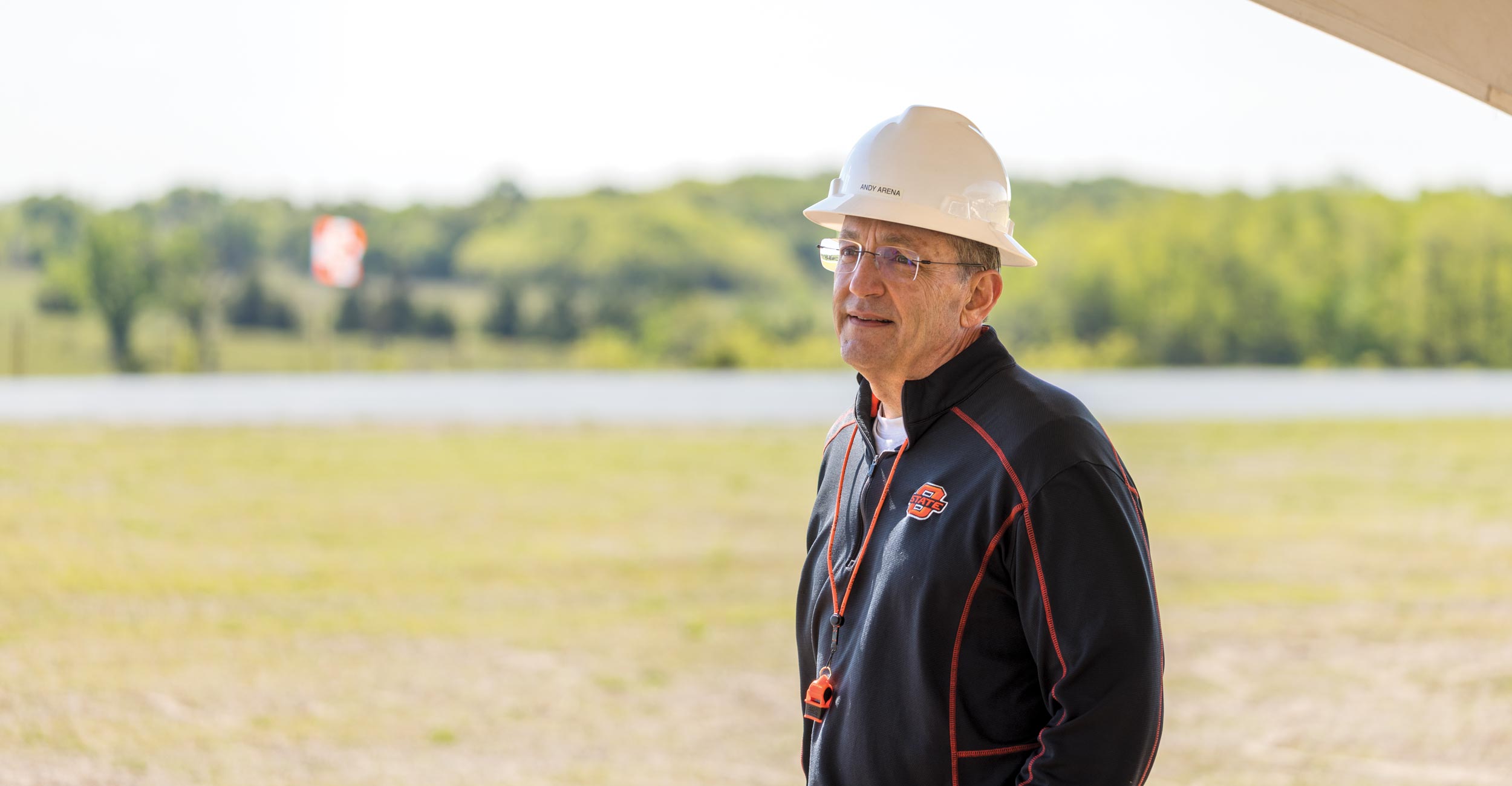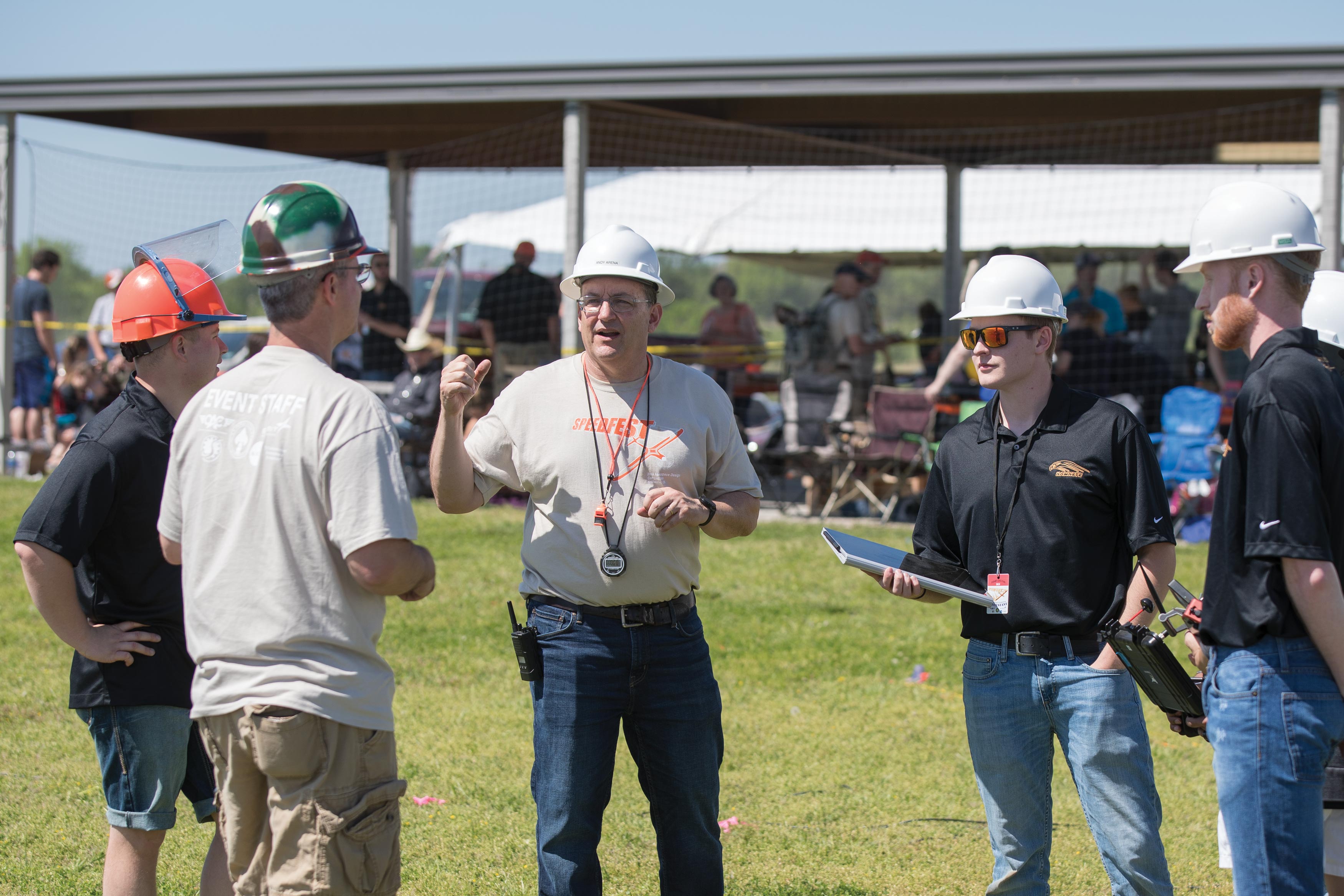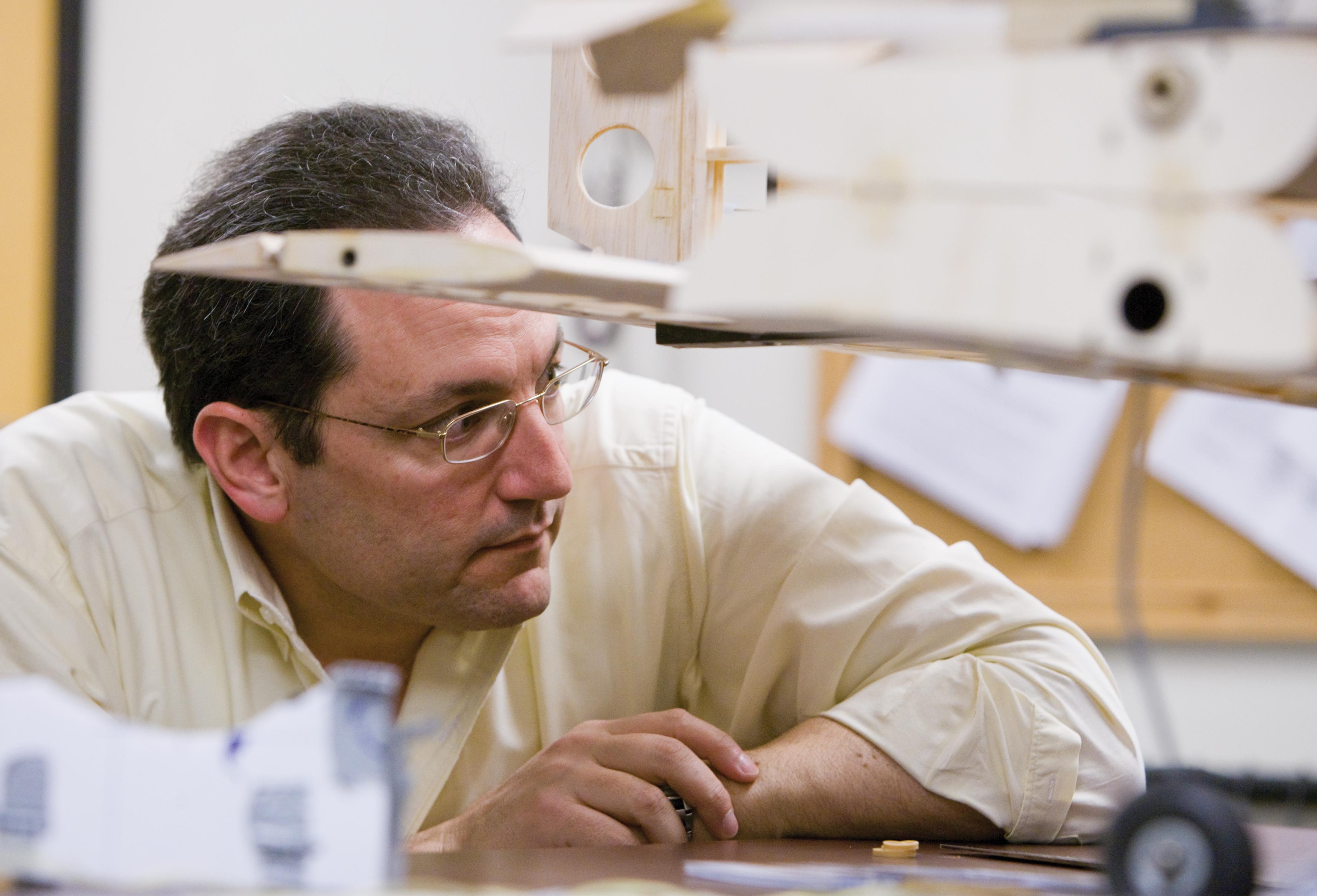
Aerospace professor Arena has built a career on interactive experiences
Monday, September 25, 2023
Media Contact: Kristi Wheeler | Manager, CEAT Marketing and Communications | 405-744-5831 | kristi.wheeler@okstate.edu
Dr. Andy Arena is always looking to give students a unique, hands-on opportunity to hone their skills.
A researcher and educator in aerospace engineering, Arena has contributed to education, research and industry collaboration throughout his time at Oklahoma State University.
With a career spanning over a decade, he has revolutionized the way students approach aerospace design and has inspired a new generation of engineers.
Arena began his education journey at the University of Arizona, where he received his bachelor’s degree in aerospace engineering in 1987. He then got his Ph.D. and Master of Science in aerospace engineering at the University of Notre Dame in 1990 and 1992, respectively.

Arena’s research caught the eye of Dr. Larry Hoberock, emeritus head of the School of Mechanical and Aerospace Engineering at OSU, who subsequently hired Arena as an assistant professor in 1993.
Initially assigned to teach aircraft guidance and control, Arena recognized a chance for students to put their skills into action. Hoberock invited Arena to sit in on a capstone course for engineering, where the students were instructed to write a paper study of a preliminary design. However, this didn’t give students the opportunity to truly apply what they had learned in the classroom.
“He said, ‘Larry, I would like to make this much more hands-on.’ I said, ‘Fine, let me know how I can help,’” Hoberock said.
Arena recognized the need for a more tangible experience, so he opened the door for his students.
“There weren’t a lot of universities doing hands-on work for students,” Arena said. “Capstone design classes were mostly theory. Trying to design an airliner on paper, like a next-generation airliner, is just so superficial. And so, we started building airplanes to give students the opportunity and to make better engineers.”
This pushed Arena to motivate students to compete in the Design/Build/Fly Competition hosted by the American Institute of Aeronautics and Astronautics (AIAA). OSU competed in this competition for several years with Arena assisting the students. More than half the times OSU competed, it won first place. The students were in the top three if they weren’t in first.
Arena’s emphasis on practical application and problem-solving skills paid off, as his students not only excelled in the competition but also gained invaluable real-world experience in aerospace engineering. Although they were winning, Arena didn’t feel the students were being challenged enough.
He tried to convince the AIAA to make the event more competitive, but they declined. So, there was nothing else for him to do but create his own competition.
Arena financed a section of land from the state of Oklahoma to build runways and hangars for his new event, which was aptly named Speedfest. The original Design/Build/Fly competition wasn’t available for high school students, but Speedfest opened that door with the IndiaClass, which means high schoolers must receive an invitation to compete.
Today, the event draws hundreds of attendees each year, who witness the capabilities of these remotely controlled aircraft, flying at speeds of up to 250 miles per hour.
“Nobody’s ever going to remember any research that I did, or any paper that I wrote or anything like that. But, if I made an impact in the life of some young student, they’re going to pass that on. They’re going to pass on something we taught them to someone else, and that’ll live forever.”
Dr. Dorinda Risenhoover, one of Arena’s colleagues, said that teachers across the state are thankful to Arena for giving students an opportunity to practice applied STEM.
“Through Andy’s leadership as the NASA OKSG Space Grant Director, over 100,000 students and 5,000 educators have been impacted through India Class Speedfest, educator professional development, NASA OKSG preservice and in-service educator mentorships, internships at Johnson Space Center, and large-scale STEM engagement events,” Risenhoover said. “The impact created by his leadership has led educators all over the state to feel empowered as STEM thinkers and doers so that they can, in turn, empower their students as future participatory stakeholders of STEM.”
Beyond his work in aerospace education, Arena has also made contributions to the field through his involvement with the NASA Oklahoma Space Grant Consortium, of which he is currently the director. Arena has brought in over $9 million in research funding, which has enabled him to pursue his research endeavors: working on unmanned aircraft.
Arena’s research and education strategies have attracted more faculty to the aerospace department according to Hoberock, who said OSU is now one of the leading universities for aerospace engineering.
Dr. Joe Conner, a former student of Arena and a current colleague, said Arena is a kind yet firm teacher.
“Another one of his philosophies is that everything works on paper. When you have to make it a realization, that’s when the reality hits,” Conner said.
Conner said that nothing changed for him when he moved from being one of Arena’s students to his colleague. He said that Arena’s expectations for his students and his colleagues are almost the same as Arena expects everyone to put in their best work, because he will work just as hard.

“He is not a micromanager, he’s a macro manager,” Conner said.
Another of Arena’s philosophies is to practice hands-on STEM rather than theoretical STEM. Conner said Arena wants all of his projects to be applicable in the real world, outside of climate-controlled rooms and the perfect research setting.
When Arena began his education journey around 30 years ago, he directed OSU into becoming one of the first universities to stray away from purely on-paper STEM.
“I would say that we are one of the pioneers in hands-on STEM,” Arena said.
Arena’s passion for teaching extends past the university setting and into other levels of education, like high school. His desire to spread the love of aerospace to the next generation gave high schoolers more opportunities and it’s what those students will do with their newfound aerospace knowledge that truly inspires him.
“Nobody’s ever going to remember any research that I did, or any paper that I wrote or anything like that,” Arena said. “But, if I made an impact in the life of some young student, they’re going to pass that on. They’re going to pass on something we taught them to someone else, and that’ll live forever. So, that’s why it’s great to hear their stories about the impact we make in their lives."
Photos: Phil Shockley and Gary Lawson
Story by: Mak Vandruff | IMPACT Magazine
